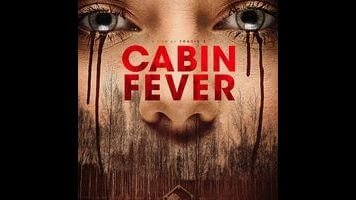There’s pointless, and then there’s a scene-for-scene remake of Cabin Fever

Plenty of horror remakes are unnecessary; we didn’t need a new Texas Chain Saw Massacre, because we still have the old one, and it’s lost none of its nerve-shredding, sleep-destroying power. But for sheer pointlessness, this week’s Cabin Fever redo really takes the rotting cake. Eli Roth’s gross-out debut, about a group of college kids ravaged by a flesh-eating virus, is only about a decade and a half old—and unlike the various French and Japanese genre movies that regularly get speedy American do-overs, it won’t scare off the subtitle averse. What’s more, the makers of this modern makeover have taken the laziest possible approach to their assignment and actually reused Roth’s screenplay. Scene for scene, line for line, gag for gag, it’s basically the same movie. And the original was no masterpiece to begin with.
Here, again, are five selfish, blandly attractive college kids, all set for a week of fun, sun, booze, and screwing in the boonies. But just as the party begins, some infected stranger shows up at their doorstep, bleeding from every orifice. Soon the kids are pealing off their own skin like paper and fending off hungry canines, to say nothing of the hostile locals who don’t take kindly to strangers round these parts, you hear? There’s an extra layer of redundancy to this gooey claptrap. Roth’s original was already riffing on expired tropes: the young dimwits puritanically punished for their transgressions; the ignored warnings of redneck soothsayers; the woodland vacation home soon to receive a bright-red new paint job. Fourteen years haven’t made those conventions feel any more fresh. If anything, The Cabin In The Woods has only made it harder to score scares from, well, a cabin in the woods.
Evaluating remakes is tricky. After all, slavish faithfulness to the source material is only a problem to those who know the source material. But save for excising a racist joke, Cabin Fever makes no improvements; it’s proof that you can basically carbon copy a bad movie and still come out with a worse one. Those who are familiar with Roth’s film can at least preoccupy themselves cataloguing the very minor deviations—the way, for example, that the group’s resident backwards-cap frat boy has been replaced by a lanky, hipster douchebag (Dustin Ingram), or how the sleazy town deputy is now a woman (Louise Linton), adding a vaguely homophobic dimension to the character’s pervy behavior. The differences are mostly tonal: New director Travis Z (Scavengers) plays the scenario straighter than Roth did; the latter is often derided for his “torture-porn” approach to horror, but his successor goes much meaner, turning one mercy killing into a mercilessly protracted onslaught of pain and fear. But this is a film featuring a little kid with the habit of biting strangers while screaming about pancakes. The campiness was sort of integral, no?
Even one of those bizarre shot-by-shot remakes, like Gus Van Sant’s much-maligned Psycho, possesses more creative inspiration and merit: At least in such cases, the filmmaker is attempting an ambitious act of mimicry, doing their best to replicate the exact look, sound, and feel of another movie. There’s just no justifying this film’s existence. Cabin Fever fans will have no use for it. Detractors will note that it doesn’t “fix” any of the existing problems. And the uninitiated can easily just acquire the original. Who, exactly, is the new Cabin Fever for? The easy answer is that it’s for on-demand browsers who don’t recognize the title and want a quick gore fix. But Roth himself actually produced the remake, which suggests an alternate explanation: After years of paying tribute to the horror maestros he grew up on, the writer-director is now eager to join their ranks and have his own work needlessly rehashed. So, hey, maybe the new Cabin Fever does serve a purpose. It makes the old Cabin Fever look better than something else.